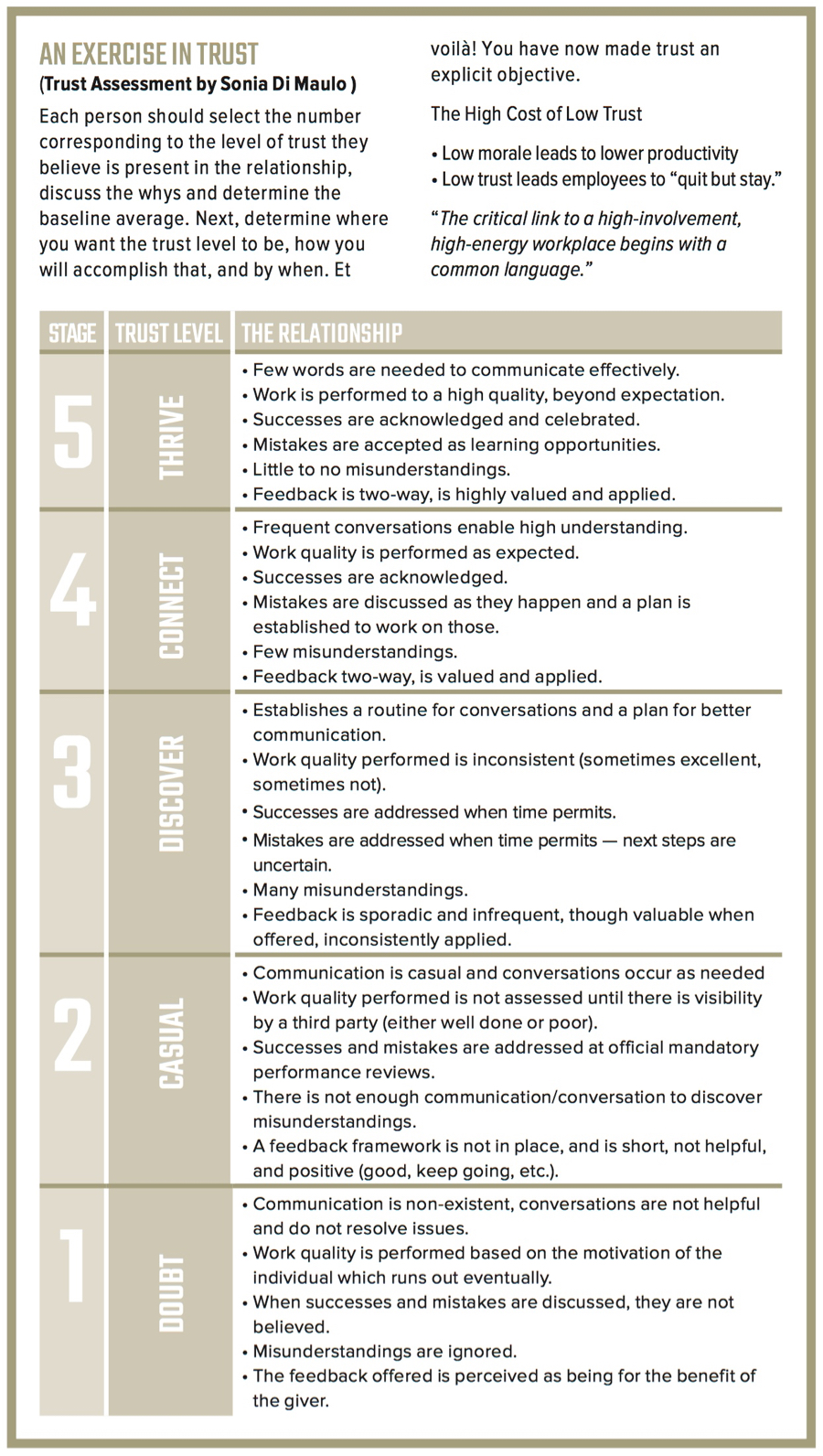The first four columns in this series explored planning for and managing growth, assessing and mitigating risk, and how to keep an eye on cash flow so you can bankroll your growth projects. In this column we’ll look at partnerships, specifically the underlying dynamics of what constitutes a healthy one.
Business partnerships can be tricky to navigate but are often essential to building a business. Each person brings a certain set of skills to the table, and when each can complement the other, you’ve got the farm version of the A-Team. (I’m dating myself with that reference!)
Read Also

The big squeeze: How to be fair to siblings during farm succession
Managing sibling business relationships on family farms.
While statistics are hard to come by, it does appear the majority of business partnerships are couple partnerships, but whether your on-farm partnership consists of just you and your significant other, a sibling or a parent, or whether it’s a larger operation with formalized partners and employees, a forward-looking business partnership will consider the following critical components: commitment to a common mission, mutual trust, complementary capabilities, fairness and forgiveness, and, perhaps most importantly, open and ongoing communications.
Do you share a ‘why’?
Do you share a common “why”? That is, do you and your partner(s) have a common vision about where the business should go?
Simon Sinek, author, motivational speaker and “inventor” of the Why concept, says that a Why is “the purpose, cause or belief that drives every organization and every person’s individual career.” A clear sense of purpose helps you focus on what matters most, driving you to take risks and push forward despite the odds or obstacles. Your Why will help you establish goals and will keep you motivated when waters get choppy.
The 40-word rule: Try this advice when you need to say something difficult. Typically, we awkwardly trip over our tongues, apologize 15 times for having to say what we have to say, and then offer several justifications, hoping against hope that the listener will see where we’re coming from. No wonder, then, that the message the other side hears is confused and convoluted, and a real muddle when you need clarity. Instead, sum up your thought in 40 words or less. Then say it. State your point. Then stop talking and let your partner absorb and process.
Research shows that entrepreneurial passion falls into three categories: passion for inventing, passion for founding and passion for developing. The research also shows that too many types of passion (i.e. too many incompatible “whys”) lead to “decreased team performance due to conflicting emotions and identities within the team.” Ultimately, when it comes time to making decisions, opposing Whys can’t rally around a central goal.
Finding a partner who has a comparable Why to yours means you will be passionate about the same business goals, approach risk in a similar fashion, and you will both be compelled to approach business challenges with the same optimism and vigour.
Do you trust each other?
At the heart of successful partnerships is communication — and at the heart of successful communication is trust.
An advantage to partnering with someone you know well (e.g. a family member) is that you’re already comfortable with each other and, many would add, you can trust them. (Though there are some families where lack of trust can be a big red flag.) How can you identify if trust is an issue?
Sonia DiMaulo, founder and chief reinvention officer at Harvest Performance, says that there are five most common factors that lead to conflict and are a strong indication that trust is lacking: 1) personality clashes, 2) poor leadership, 3) lack of honesty, 4) stress and 5) clashing values.
“These factors end up leading to personal insults and attacks, people getting sick and a lack of motivation,” says DiMaulo. “Trust is the performance multiplier that enables all others.”
Stephen M. R. Covey, author, speaker and trust expert writes in his book How the Best Leaders Build Trust that “true transformation starts with building credibility at the personal level.”
“Having an honest, transparent conversation with your partner(s) about if and how much you trust each other is the key to success and happiness at work,” says DiMaulo. “Coupled with a compatible ‘Why’ you will have the perfect recipe for longevity of the business and meaningful work.” The 40-word exercise (see sidebar) is an example of a trust building step that you can use to kick-start the trust conversation.
Do you speak the same language?
Everyone has a unique linguistic style. The word choices they make; the pauses and pace of their speech, whether they tend to use a lot of stories, apologies or questions, and how direct or indirect they are, are all very personal. Now, linguist Deborah Tannen has shown through research that our individual linguistic styles are how we interpret others’ meaning, and that conversational style often overrides the content of our speech.
Not only do individuals have different communication styles, but so do women and men. “Combined, any misunderstandings resulting from these different styles can lead to disastrous results,” she writes in her book You Just Don’t Understand: Women and Men in Conversation.
She points to a common example: “The accusation of interruption is particularly painful in close relationships, where interrupting carries a load of meta-messages — that a partner doesn’t care enough, doesn’t listen, isn’t interested. These complaints strike at the core of such a relationship, since that is where most of us seek, above all, to be valued and to be heard.”
While in this sense she’s talking about a partner as in a husband/wife, much of her research has focused on the conversational dynamics of the workplace and she always comes back to the fact that men and women differ in how they express what they mean. It’s very much like cross-cultural communication: would you readily pick up on the nuances of a business conversation in, say, China without research and training? “You can’t assume that the other person means what you would mean if you said the same thing in the same way,” Tannen writes in the Harvard Business Review article “The Power of Talk: Who Gets Heard and Why.”
Poor communication is often the result of differing linguistic styles. “Simply realizing that what seems like unfair or irrational behaviour may be the result of a different style helps to reduce frustration,” she says.
Do you know your partner’s decision-making process?
Research by Gary A. Williams and Robert B. Miller at Miller-Williams Inc. found that when it comes to high-stakes, tough decisions that “involve many complex considerations and serious consequences,” people tend to fall into one of five dominant styles of decision-making: charismatic, thinker, skeptic, follower and controller. According to their Harvard Business Review article “Change the Way You Persuade,” the characteristics of these five groups are as follows:
- Charismatics: Account for 25 per cent of all executives they polled. Charismatics are easily intrigued and enthralled by new ideas, but experience has taught them to make final decisions based on balanced information, not just on emotions. They are typically enthusiastic, captivating, talkative, dominant.
- Thinkers: Thinkers made up 11 per cent of the executives surveyed. They are impressed with arguments that are supported by data and they tend to have a strong aversion to risk. They can be slow to make a decision and are the hardest group to persuade. Typical characteristics: cerebral, intelligent, logical, academic.
- Skeptics: Made up 19 per cent of those polled. They tend to be highly suspicious of every data point presented, especially any information that challenges their world view. They often have an aggressive, almost combative style and are usually described as take-charge people. Typical characteristics: demanding, disruptive, disagreeable, rebellious.
- Followers: Accounted for 36 per cent of surveyed respondents. They make decisions based on how they’ve made similar choices in the past or on how other trusted executives have made them. They tend to be risk averse. Typical characteristics: responsible, cautious, brand-driven, bargain-conscious.
- Controllers: Made up nine per cent of polled executives. They abhor uncertainty and ambiguity, and they will focus on the pure facts and analytics of an argument. Typical characteristics: logical, unemotional, sensible, detail-oriented, accurate, analytical.
Why is knowing someone’s decision-making style important in a partnership? It provides insight into how they come to conclusions, so you learn not to take it personally and go “off” on them. Also, once you’ve identified each partner’s style, you can package information (e.g. your arguments for trying something new) in a way that appeals to and even persuades your partner. It’s not just about what you say, but how you say it. “Each decision is influenced by both reason and emotion, but the weight given to each of these elements during the decision-making process can vary widely depending on the person,” says Williams and Miller.
Do you have an escape plan?
Life happens. We get distracted by personal issues or stressed out about an ongoing problem. As they say, there is no “I” in team; in order for the business to work as a unit, the components have to be in good shape — or at the very least a jobber part can be added. Don’t leave your partners in the lurch; if you feel that you can’t pull your weight, discuss with your partners about bringing in a temporary, part-time employee. It’s important to take time for ourselves and step away from the business, but it’s equally important to be honest with partners and let them know when you’re struggling so the business doesn’t suffer.
Another important escape: setting time aside outside of work to spend with each other. This is particularly important in an agricultural context since many farm partnerships are with a spouse and/or children/parents. One survey indicated that 59 per cent of respondents complained about a lack of separation between work and personal life and 56 per cent were worried that it could ruin their relationship with their spouse. Plan some occasional fun family time and leave the business in the barn.
With an advisor’s help, you might also want to come up with the ultimate escape plan: an exit strategy that describes under what conditions and how a partner will leave and/or how you will dissolve the partnership.
What next steps can you take today?
- Test the waters: Start working on a few small projects with a potential partner to see how (if!) you can work together. Identify areas of friction and try to gauge how big an impact they could have on a larger project or business venture.
- Consider drafting a project charter. This can be useful when you think you and your partner(s) are on the same page, but upon further investigation, it turns out you’re not. Frequently used in a community organizations context where many stakeholders with similar but different missions are coming together on one project, it describes a project in its entirety, creates a shared understanding around objectives, pinpoints actions for carrying out the project, and outlines roles and responsibilities.
- Make it a habit to share with each other your ultimate goals, your big picture, your reasons for doing what you do. Align your individual Whys to the organizational Why. Find a way to bring meaning to your work, both the work you love and the work that is necessary, so that in the end it will lead to purposeful outcomes that you can all be proud of.
April M. Stewart is the owner of Alba PR, a brain-to-brain communication design firm, and the creator of “The Farmer’s Survival Guide: How to Connect With 21st Century Consumers,” a blog and workshops which look at communication impact boosters. She is also a sixth-generation Quebec dairy farmer, president of Canadian Young Speakers for Agriculture, and a member of the Canadian Agri-Business Education Foundation board. You can find her on Twitter under @FarmersSurvival.

















